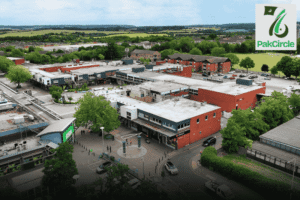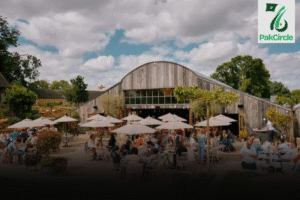When it comes to music production, there are certain techniques that stand out and define a genre’s sound. One of the most iconic techniques in Bay Area music is the vocal chop. This technique, often used in hip-hop, rap, and electronic music, involves chopping up vocal samples and rearranging them to create rhythmic, catchy hooks that give a track its unique flavor. The Bay Area vocal chop is a signature style, known for its bouncy, energetic vibe that keeps listeners hooked.
In this article, we’ll dive into the Bay Area vocal chop, exploring its origins, how to use it in your own music production, and the impact it has on the sound of the Bay Area’s music scene. Whether you’re a beginner looking to learn the technique or an experienced producer seeking to enhance your skills, this guide will help you master the art of the vocal chop.
Quick Comparison Table: Bay Area Vocal Chop Technique
| Feature | Bay Area Vocal Chop | Impact on Music Production |
| Sound Characteristics | Chopped, pitched, and rhythmic vocal samples | Creates catchy, energetic loops and hooks |
| Primary Genre | Hip-hop, rap, electronic, and Bay Area rap | Commonly used in the Bay Area hip-hop scene |
| Production Tools | Sampling, pitch-shifting, chopping software | Software such as Ableton Live, FL Studio, or Logic Pro |
| Effect on Track | Adds a dynamic layer to music, creating a groove | Enhances rhythm, making the track more engaging |
| Famous Use | Used in songs by artists like E-40, Mac Dre, and Keak da Sneak | Defines the sound of Bay Area music culture |
What is a Bay Area Vocal Chop?
A Bay Area vocal chop is a specific technique used in music production, particularly within the Bay Area hip-hop scene, where vocal samples are chopped up, pitched, and rearranged to create rhythmic, looped patterns. The process involves selecting a vocal snippet and slicing it into smaller pieces, then manipulating each part to fit a specific groove or rhythm.
The Bay Area vocal chop differs from standard vocal chopping due to its distinctive bounce and punchy rhythm. It’s often used to create memorable hooks or melodies that sit atop a beat, providing a catchy, energetic element that drives the track forward. This technique is one of the defining elements of hyphy music and Bay Area rap, contributing to the unique sound of the region’s musical culture.
How to Create a Bay Area Vocal Chop
Creating your own Bay Area vocal chop involves several key steps that incorporate both creativity and technical know-how. Here’s how you can start incorporating vocal chops into your productions:
1. Choose the Right Vocal Sample
The first step in creating a vocal chop is selecting the right vocal sample. Bay Area vocal chops often come from rap verses, sung hooks, or even spoken words. The key is to find a vocal that has clear, punchy syllables or interesting phrases that can be manipulated.
- Tip: Look for vocal samples that have a rhythmic quality to them, as this will make the chopping process more effective. The vocal should be strong enough to stand out even when chopped into smaller pieces.
2. Chop the Sample
Once you’ve selected your sample, the next step is to chop it up. You can use a variety of tools to slice the vocal into smaller sections, such as:
- Ableton Live: Ableton’s warping and slicing tools are ideal for creating vocal chops. You can use the Slice to MIDI function to separate the vocal into slices and then manipulate each slice individually.
- FL Studio: FL Studio’s Slicex plugin allows you to chop vocals and reassemble them in creative ways.
- Logic Pro: Use the Flex Time feature to chop and stretch vocal samples.
After chopping the sample, arrange the pieces into a rhythmic pattern that complements your track. Focus on creating a catchy loop that repeats throughout the track, with each chop falling in time with the beat.
3. Pitch and Time Manipulation
One of the most important aspects of the Bay Area vocal chop is its pitch and time manipulation. Once you’ve chopped the vocal into segments, you can pitch shift the individual pieces up or down to add variation and create interesting textures.
- Pitching up can add a sense of excitement and urgency.
- Pitching down can create a darker, more laid-back vibe.
You can also play around with time stretching to make the chops sync perfectly with your track’s tempo.
4. Add Effects and Processing
To really give your vocal chops that signature Bay Area sound, you’ll need to apply some effects. Some popular effects used in vocal chopping include:
- Reverb: Adds space and depth to the vocal, making it sound more atmospheric.
- Delay: Creates rhythmic repetitions that add bounce to the vocal chop.
- Flanger/Phaser: Adds movement and depth to the chops, making them sound more dynamic.
- EQ: Sculpt the vocal’s tone to ensure it sits well in the mix and cuts through the track.
- Distortion: For a raw, gritty sound, adding a bit of distortion to your chops can help emulate the characteristic Bay Area hyphy sound.
Experiment with these effects to give your chops more character and make them pop in your track.
5. Arrange and Layer
Finally, you’ll need to arrange your vocal chops within the track. A Bay Area vocal chop is often used as a hook or a main element of the chorus. Layer the chops with other elements like drums, basslines, and synths to create a cohesive track. Play with the spacing between the chops and their placement to create a groove that keeps the listener engaged.
Why Is the Bay Area Vocal Chop Popular?
The Bay Area vocal chop has become synonymous with the region’s hyphy movement and its unique music style. The technique is used to inject energy into tracks, giving them a rhythmic, bouncing quality that captures the essence of the Bay Area sound. Here’s why it’s so popular:
1. Signature Sound of the Region
Artists like E-40, Keak da Sneak, and Mac Dre have all contributed to the popularity of the Bay Area vocal chop. These artists were some of the pioneers of the hyphy movement, which embraced high-energy beats and distinctive vocal manipulation. The vocal chop became an iconic part of this style, often used to hype up the crowd during live performances.
2. Versatility Across Genres
While the Bay Area vocal chop is primarily used in hip-hop, its influence has spread across different genres, including electronic music and even pop. Producers outside the Bay Area have started incorporating the technique into their own tracks, using vocal chops to create unique hooks and melodies. The Bay Area vocal chop has become a versatile tool in the producer’s arsenal, used to enhance any genre’s rhythm and energy.
3. Creative Expression
The Bay Area vocal chop is not just a technique but a form of creative expression. By slicing, pitching, and rearranging vocals, producers can create something entirely new from existing sounds. The possibilities for manipulating vocals are endless, which makes it an exciting and rewarding process for music producers.
Conclusion
The Bay Area vocal chop is an essential technique for producers looking to create energetic, catchy, and unique sounds. With its roots in hyphy and Bay Area rap, this vocal manipulation style has influenced music across genres, providing a distinctive flavor that’s hard to replicate. Whether you’re a beginner producer or an experienced artist, mastering the art of the vocal chop can help you add that extra layer of rhythm and creativity to your music. By following the steps outlined in this guide, you can start experimenting with your own Bay Area vocal chops, elevating your tracks with dynamic and memorable vocal samples. Get creative, try out different effects, and let the rhythm drive your next musical creation.
Read More:
https://pakcircle.pk/e46-m3-fender-cutout/
https://pakcircle.pk/250-gallon-propane-tank-for-sale/
https://pakcircle.pk/slip-chain-necklace/
FAQs
Q1: Can I use Bay Area vocal chops in genres other than hip-hop?
A1: Yes, the Bay Area vocal chop is versatile and can be used in various genres like electronic, pop, and trap. It adds a rhythmic, catchy element that enhances the energy of any track.
Q2: Do I need special software to create vocal chops?
A2: No, most music production software like Ableton Live, FL Studio, and Logic Pro have built-in tools for chopping and manipulating vocals. You can use the slicing, pitch-shifting, and time-stretching features available in these programs.
Q3: How do I make sure my vocal chops fit into the beat?
A3: Ensure that your vocal chops are properly aligned with the tempo and rhythm of your track. Use time-stretching and quantization tools in your DAW to sync the chops to the beat perfectly.
Q4: Can I make my own vocal chops from scratch?
A4: Yes, you can either use existing vocal samples or record your own to create custom vocal chops. The key is to chop the vocal into rhythmic sections and manipulate them to fit your track’s vibe.
Q5: Are there any famous songs that use Bay Area vocal chops?
A5: Yes, artists like E-40, Keak da Sneak, and Mac Dre frequently use vocal chops in their music, and their tracks are a great example of how this technique can enhance hip-hop and rap songs.








